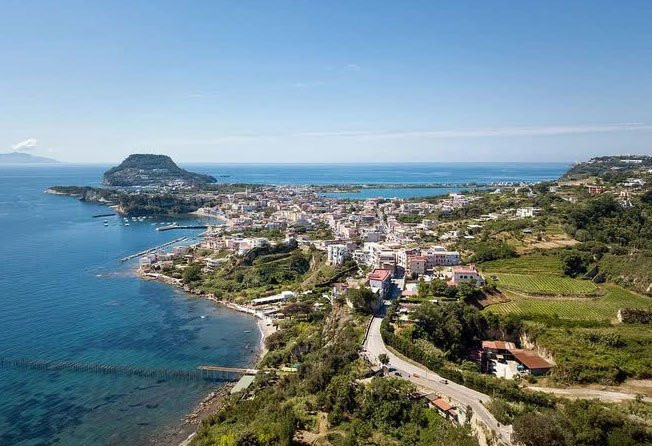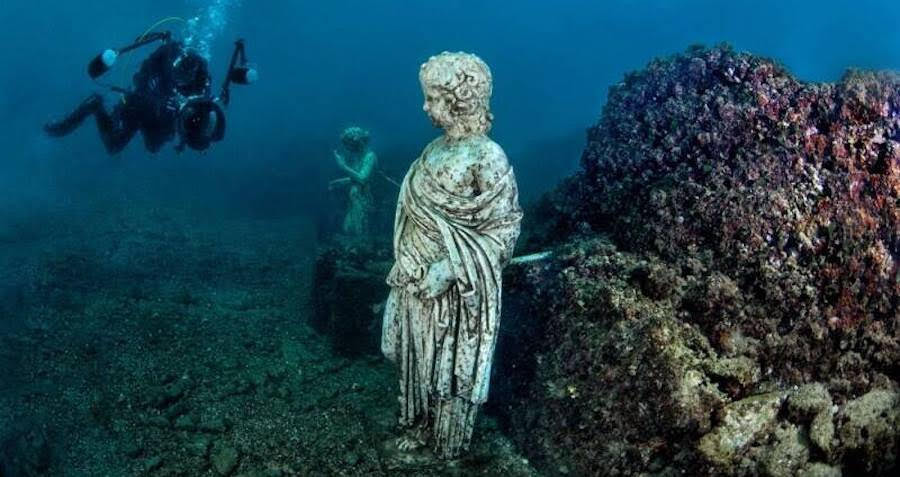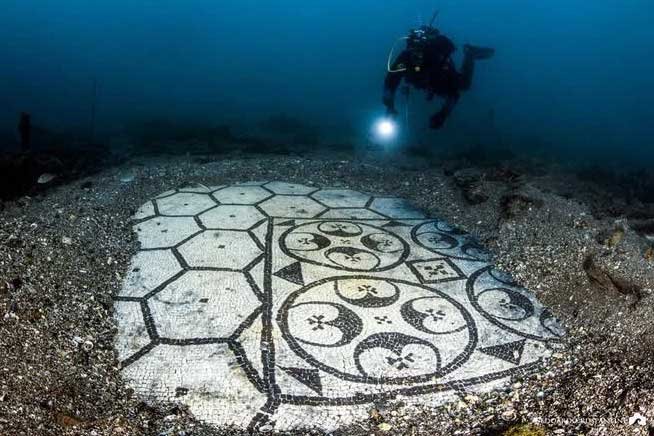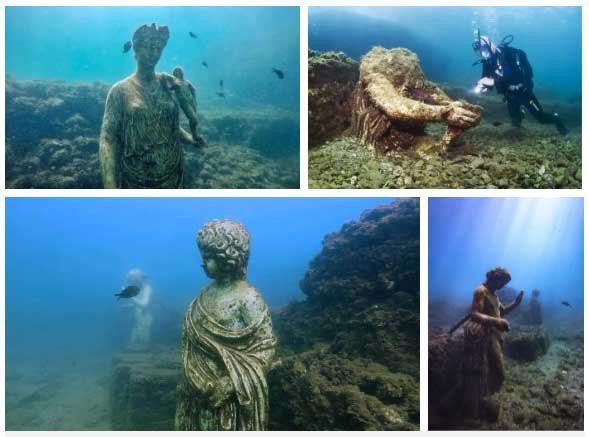A Lavish Resort for the Roman Elite

Baia, a coastal town located approximately 30km from Naples, Italy, was once the epitome of luxury and indulgence for the Roman Empire’s elite class. Often referred to as the “Las Vegas of the Roman Empire,” this resort town catered to the whims of poets, generals, and everyone in between, offering a sanctuary for illicit affairs and unrestrained pleasure.
A Playground for the Rich and Powerful

Renowned figures such as Cicero, Virgil, and Pliny the Elder maintained residences in Baia, drawn by the rejuvenating public baths and the mild climate. The town’s reputation for debauchery was further fueled by tales of intrigue and scandal, including rumors of Cleopatra’s escape after Julius Caesar’s assassination and Julia Agrippina’s alleged poisoning of her husband, Claudius, to pave the way for her son Nero’s ascension to the throne.
Sinking into the Sea
The Downfall of an Opulent City

Baia’s downfall was ironically rooted in the very volcanic activity that had initially attracted the Roman nobility. Over several centuries, bradyseism – the gradual rise and fall of the Earth’s surface caused by hydrothermal and seismic activity – caused much of the city to sink into a watery grave, where it remained submerged for more than 500 years.
Rediscovering a Lost Treasure

Tourist interest in Baia was renewed in the 1940s when aerial photographs revealed the existence of submerged structures. Italian officials subsequently commissioned a submarine survey, revealing a remarkable sight: ancient ruins continuously rising and falling beneath the sea’s surface, caught in a geological purgatory.
Exploring the Underwater City
Diving into History
Since the site’s designation as a marine protected area in 2002, advances in marine archaeology and 3D-scanning technology have allowed visitors to glimpse into this chapter of antiquity. Divers, historians, and photographers have captured submerged rotundas, porticos, and the famed Temple of Venus (a thermal sauna), providing insight into Rome’s most outrageous debauchery.
Experiencing Baia’s Wonders

Visitors can explore the underwater ruins from glass-bottomed boats or by snorkeling and scuba diving tours offered by local diving centers. On calm days, they can spot Roman columns, ancient roads, and elaborately paved plazas, adorned with statues flecked with barnacles – a haunting reminder of Baia’s former grandeur.
A Race Against Time
An Uncertain Future
While the Archaeological Superintendency for Campania manages a museum of relics pulled from the sea, seismologists predict further volcanic activity along Baia’s coast in the near future, rendering the city’s fate uncertain once again. With recent talks of potentially closing the sunken ruins to visitors, time may be running out to witness this lost relic of ancient Italy’s opulence.

For now, however, visitors can search this underwater city for a hidden entrance – if not to the underworld, then at least to some spectacular subterranean treasures that bear witness to the excesses of the Roman Empire’s elite.

